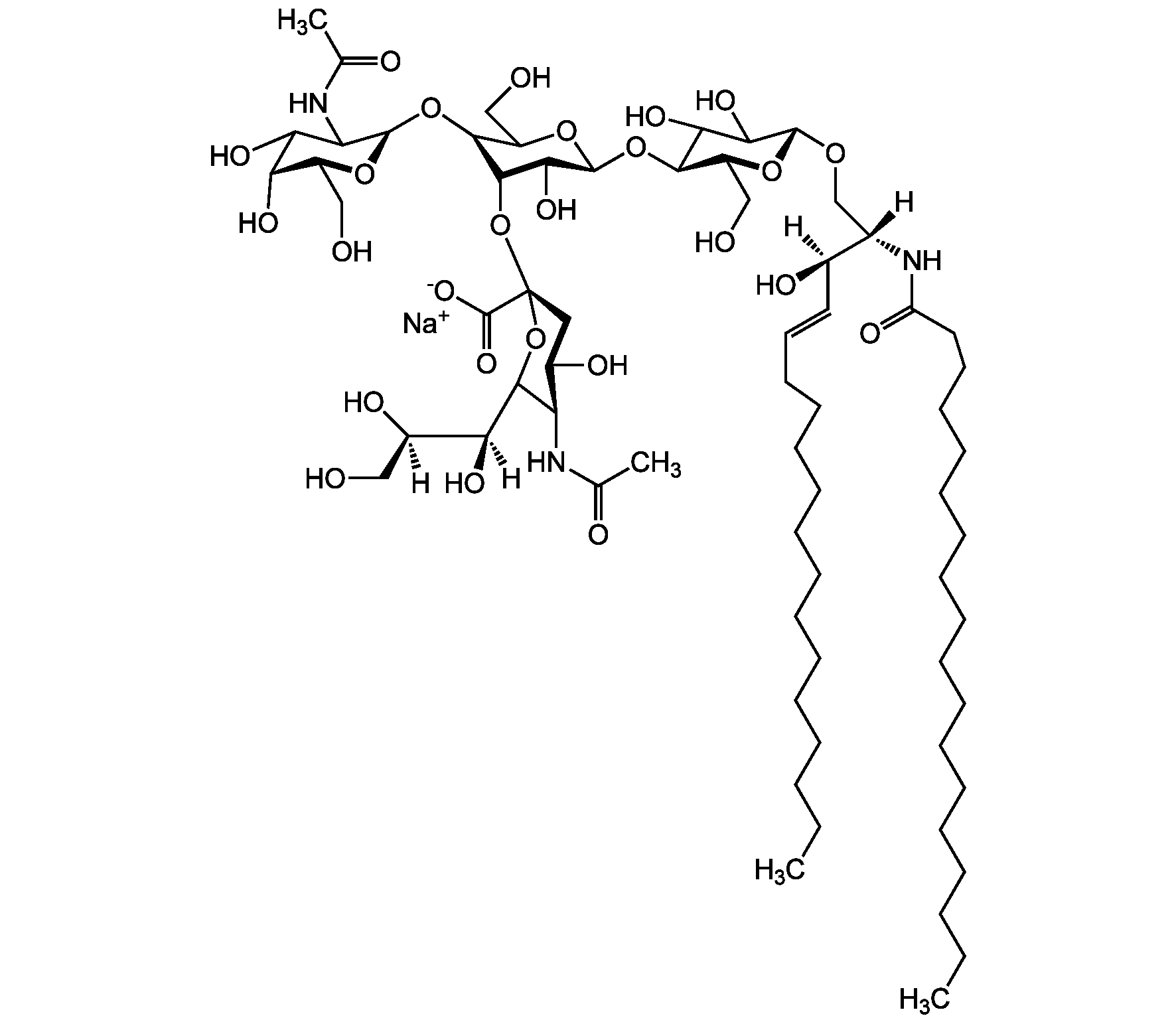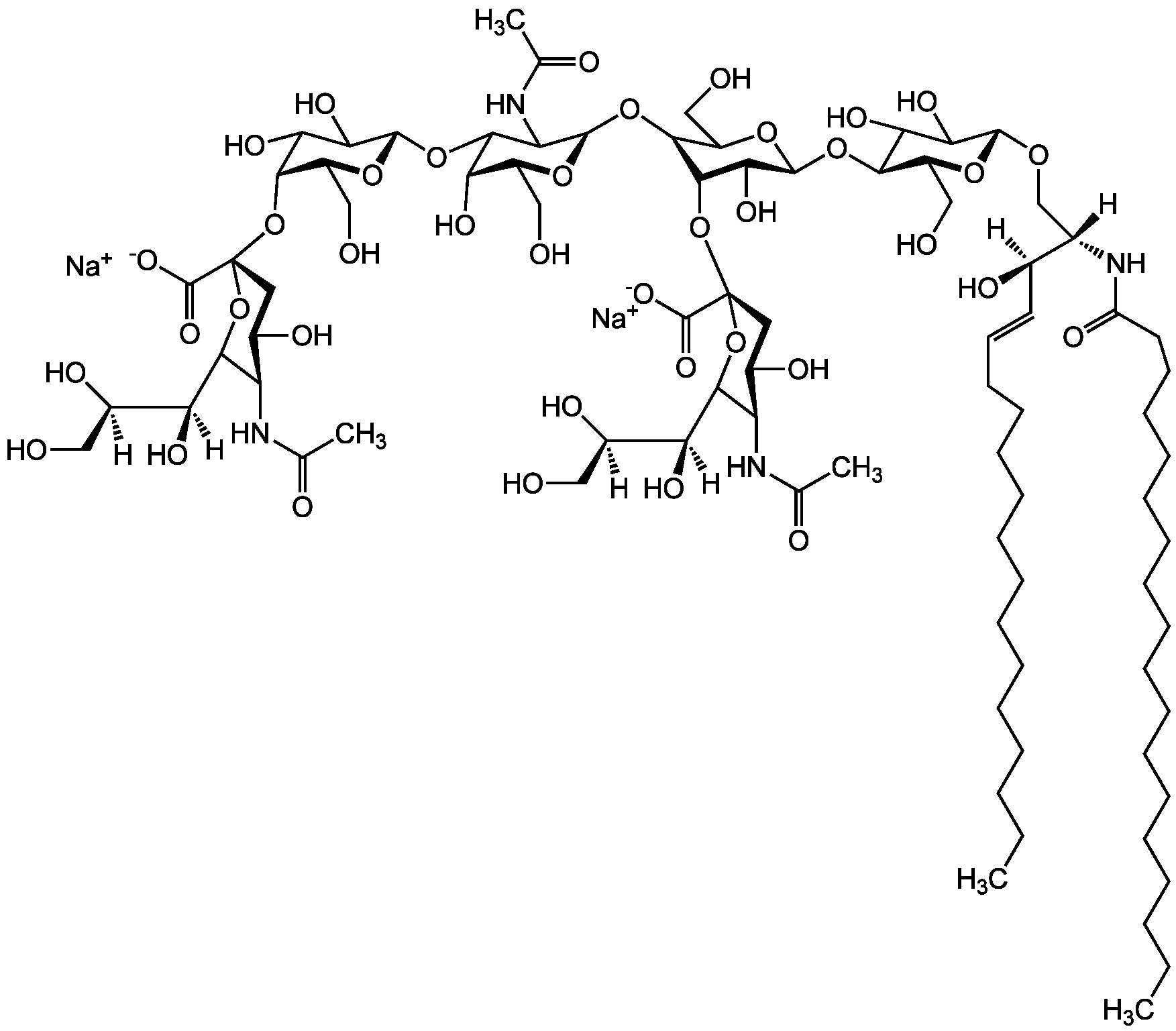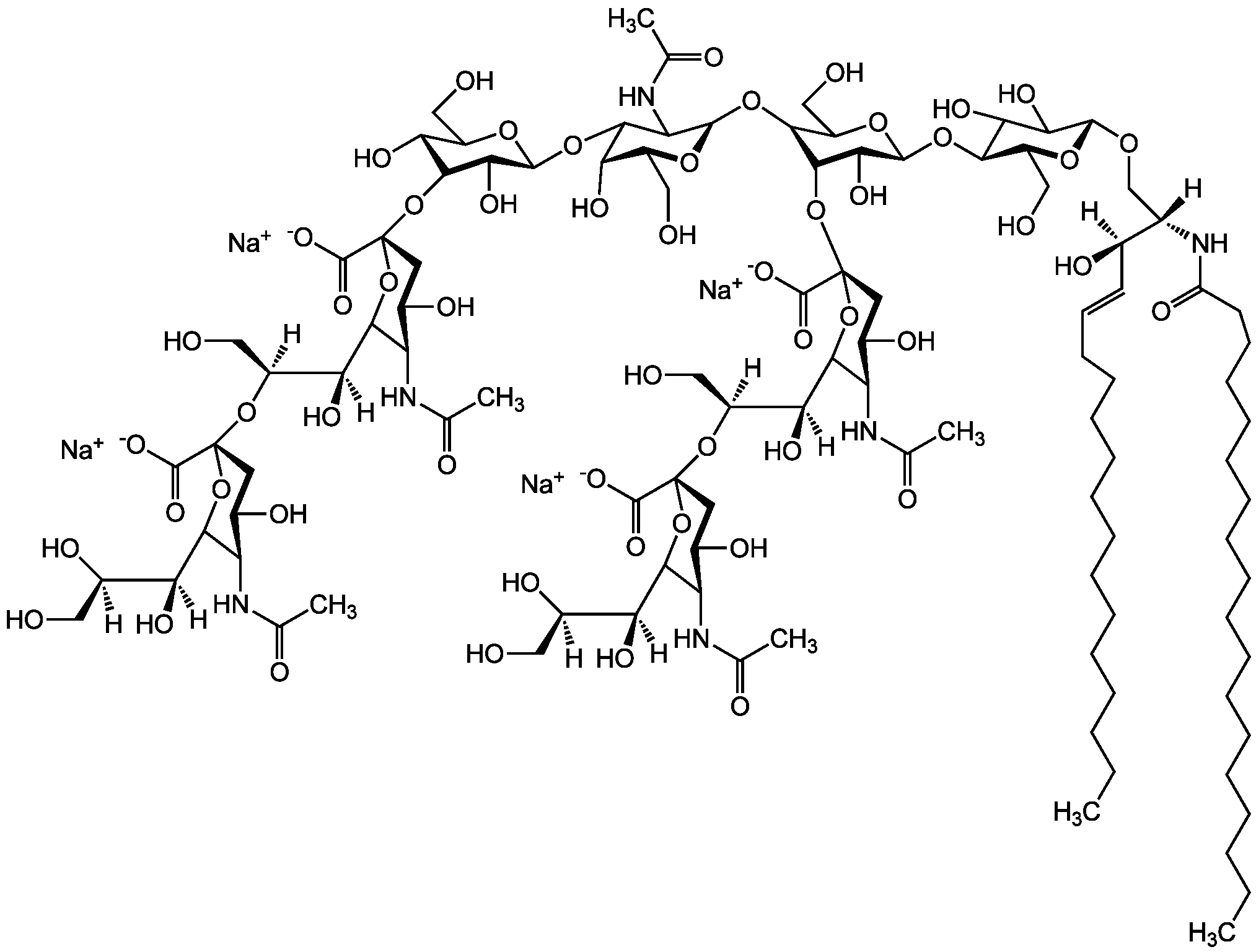
Chemical Structure
Ganglioside GT1b . trisodium salt (bovine brain)
AG-CN2-9006
CAS Number59247-13-1
Product group Chemicals
Estimated Purity>98%
Molecular Weight2126.3 . 69.0 (calculated on sphingosine C18:1 and stearic acid)
Overview
- SupplierAdipoGen Life Sciences
- Product NameGanglioside GT1b . trisodium salt (bovine brain)
- Delivery Days Customer10
- CAS Number59247-13-1
- CertificationResearch Use Only
- Estimated Purity>98%
- Molecular FormulaC95H162N5O47 . 3Na
- Molecular Weight2126.3 . 69.0 (calculated on sphingosine C18:1 and stearic acid)
- Scientific DescriptionChemical. CAS: 59247-13-1. Formula: C95H162N5O47 . 3Na. MW: 2126.3 . 69.0 (calculated on sphingosine C18:1 and stearic acid). Isolated from bovine brain. Gangliosides are acidic glycosphingolipids that form lipid rafts in the outer leaflet of the cell plasma membrane, especially in neuronal cells in the central nervous system. They participate in cellular proliferation, differentiation, adhesion, signal transduction, cell-to-cell interactions, tumorigenesis and metastasis. The accumulation of gangliosides has been linked to several diseases. Ganglioside GT1b binds botulinum and tetanus neurotoxins and it prevents neurotoxicity of glutamate on neuronal cells. - Gangliosides are acidic glycosphingolipids that form lipid rafts in the outer leaflet of the cell plasma membrane, especially in neuronal cells in the central nervous system. They participate in cellular proliferation, differentiation, adhesion, signal transduction, cell-to-cell interactions, tumorigenesis and metastasis. The accumulation of gangliosides has been linked to several diseases. Ganglioside GT1b binds botulinum and tetanus neurotoxins and it prevents neurotoxicity of glutamate on neuronal cells.
- SMILES[Na+].[Na+].[Na+].[H][C@@](O)(CO)[C@]([H])(O)C1O[C@@](CC(O)[C@H]1NC(C)=O)(O[C@H]1[C@H](O)C(CO)O[C@@H](OC2[C@@H](O)[C@H](CO)O[C@H](O[C@H]3C(CO)O[C@@H](O[C@H]4C(O)C(O)[C@H](OC[C@]([H])(NC(=O)CCCCCCCCCCCCCCCCC)[C@]([H])(O)\C=C\CCCCCCCCCCCCC)O[C@H]4CO)C(O)[C@H]3O[C@@]3(CC(O)[C@@H](NC(C)=O)C(O3)[C@@]([H])(O)[C@]([H])(CO)O[C@@]3(CC(O)[C@@H](NC(C)=O)C(O3)[C@@]([H])(O)[C@]([H])(O)CO)C([O-])=O)C([O-])=O)C2NC(C)=O)C1O)C([O-])=O
- Storage Instruction-20°C,2°C to 8°C
- UNSPSC12352200







